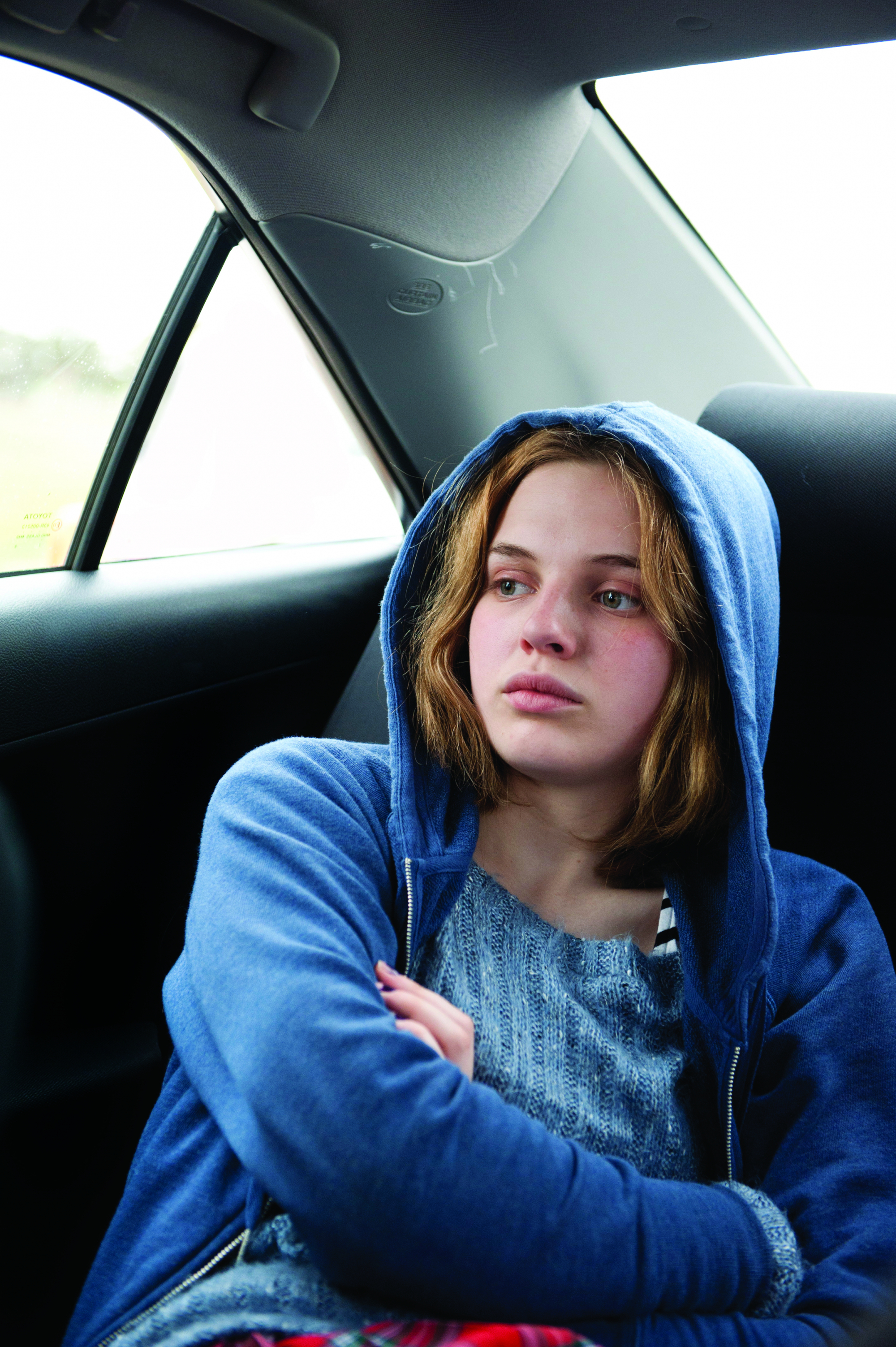The opening shots of Sue Brooks’ Looking for Grace (2015) present a drone’s-eye view of Western Australia’s wheat belt. Seen from above, the undulations of ridges and riverbeds resemble the songlines of Aboriginal art; the camera pans the topographical configurations of the terrain, drawing the eye across the patterned sweep and granting the simultaneous impression of continually shifting movement and the formations’ permanence. The sun-bleached colour palette, in hues of dull gold and dusky grey, mark a departure from the usual bright ochres associated with the desert regions of the outback. These had been a feature of Brooks’ Japanese Story (2003) and were similarly depicted, through soaring aerial shots, in her Road to Nhill (1997). Despite the geographical shifts, there are resemblances between the thematic territories tackled by these films, traceable throughout the wider work of Brooks and her collaborator, writer Alison Tilson. In Brooks’ latest feature, we see yet another story depicting the concerns of ‘small’ people unfolding amid a vast, unfathomable space.
Looking for Grace builds on Australian filmmakers’ preoccupation with the landscape, which has become a defining characteristic of our national cinema, having developed into a significant selling point and marker of differentiation in the marketplace of the arthouse and film-festival circuit. The result is an inescapable fixation that too often becomes the default means by which we explore questions of Australian identity on screen. Nonetheless, Brooks approaches these concerns with a deft and droll hand. In Looking for Grace, the sense of our lives being transient is not necessarily diminished by the solidity of the landscape; rather, she explores how this backdrop might expand and amplify our experiences. The film presents a complex treatment of time and space, with the interweaving narrative structure, careful composition and solicitous editing of images providing a thoughtful, sometimes-comical meditation on the way we struggle to locate and define ourselves within indifferent surroundings.
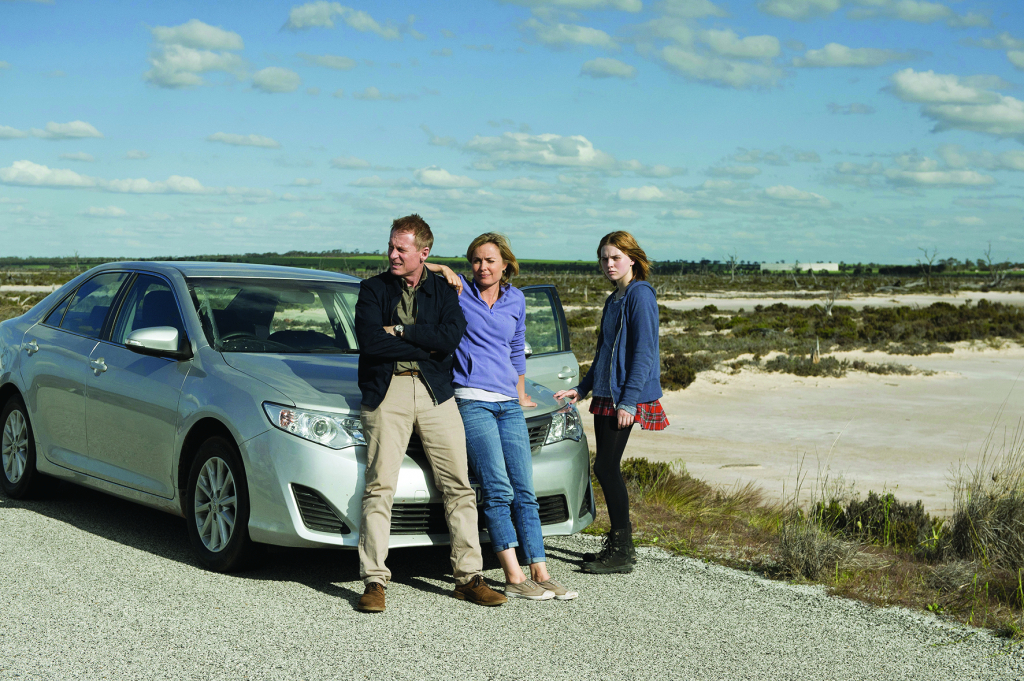
Looking for Grace follows a nonlinear, networked narrative format, with its central events emerging from multiple, overlapping stories. The storyline is refracted into segments of varying lengths, which are based on the perspectives of the different characters and clearly marked by on-screen titles such as ‘Grace’s Story’. We open with the titular Grace (Odessa Young) travelling through the country by coach with her friend Sappho (Kenya Pearson), falling for fellow passenger Jamie (Harry Richardson), running out of money and roughing it for a night. In no time, her parents, Denise (Radha Mitchell) and Dan (Richard Roxburgh), catch up with her on the road, at which point we realise that she has run away from home. The subsequent switch to other characters’ viewpoints, including those of her parents, begins to contextualise Grace’s flight. This construction of the plot ensures that, as viewers, we are constantly redacting our initial assumptions as the details accumulate. Rather than being wholly concerned with an exposition centred on Grace, this segmented narrative structure establishes the tangential concerns of all the characters, crossing into the realm of family drama and a parody of middle-class suburbia. But, although the attention to detail and well-honed performances seek to imbue each with a degree of substance, several characters feel underwritten and seem to exemplify stereotype rather than satire. The film is strongest when it homes in on the impulsive, enigmatic female protagonist. And the variegated construction of the narrative, which perhaps makes a degree of inconsistency unavoidable, does ensure a frequent return to the figure of Grace that maintains interest throughout.
Rather than being wholly concerned with an exposition centred on Grace, this segmented narrative structure establishes the tangential concerns of all the characters, crossing into the realm of family drama and a parody of middle-class suburbia.
Brooks’ structural choices make for an impressionistic film whose storyline is gleaned through the unravelling of different threads. While some of these are better developed than others, the diffuse, varied accounts of the events open up the work to multiple interpretations; the crossovers between characters and the repeated moments of interaction between their stories reinforce a sense of random coincidence on the one hand, while contributing to a feeling of fatalism on the other. At times, the moments of overlap between the plotlines can seem conspicuous and clumsily handled, but there is a payoff in the acute jolt of recognition when a forgotten character re-enters the story. These narrative junctures also serve to situate the viewer within the sequence of events, as the sense of time is otherwise hazy. The feeling of dislocation is augmented through the repetition of shots of similar stretches of desolate road where familiar cars enter and exit the frame, driving in directions that are dependent on the individual chronology of each of the stories. Yet the effect of this is not to rupture the continuity so much as to dissolve it.
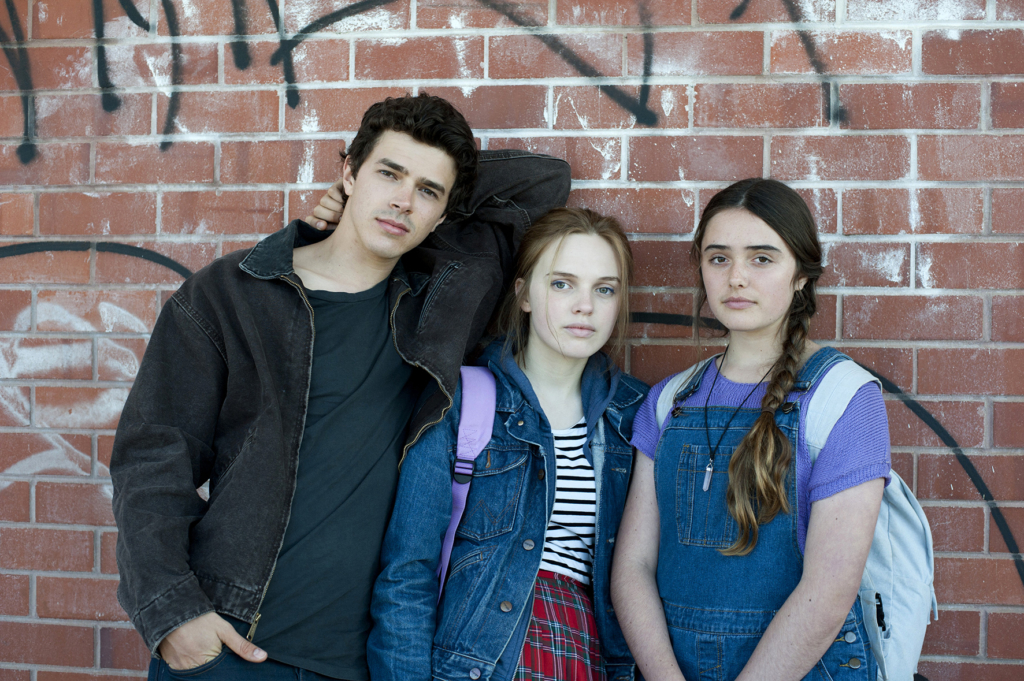
Inspired by a newspaper story of a teen robbery several years ago, Brooks drew on aspects of her own life and relationships to construct her characters. During a Q&A following the Adelaide Film Festival screening last October, the director connected this sourcing-from-the-personal to late Belgian filmmaker Chantal Akerman, noting the similarities in the treatment of time and the sense of cinematic experience between Looking for Grace and Akerman’s work, particularly Jeanne Dielman, 23, quai du Commerce, 1080 Bruxelles (1975). While this may be more aspirational than actual, the films do share a sense of measured temporality that straddles both the ephemeral and the seemingly immutable, the ever-present yet largely unfulfilled promise of escape from the rust of routine.
Brooks enhances this temporal construction with a reflective sense of spatial awareness. Scenes are sometimes punctuated by Yasujirō Ozu–esque ‘pillow shots’[1]See Martin Schneider, ‘Yasujiro Ozu and the Enigmatic Art of the “Pillow Shot”’, Dangerous Minds, 22 August 2013, <http://dangerousminds.net/comments/yasujiro_ozu_and_the_enigmatic_art_of_the_pillow_shot>, accessed 17 February 2016. – the camera held for an inordinate period on a wall-mounted air conditioner or freezer full of ice-creams – that slow the film’s pace and open up room for contemplation, while the mundaneness of the objects provides an edge of melancholy. The soundtrack, too, is carefully employed to convey this sense of space, and often it is the absence of sound that is most effective. The discernible hum of a car engine is made more apparent for breaking the silence of the empty country road; a character draws attention to the lack of sirens accompanying an ambulance’s flashing lights. The film’s pace, shot durations and variations on recurring images similarly preclude an engagement solely on the level of narrative development. Instead, Brooks aims at a more phenomenological experience, inviting viewers to share the characters’ impressions of unfolding reality.
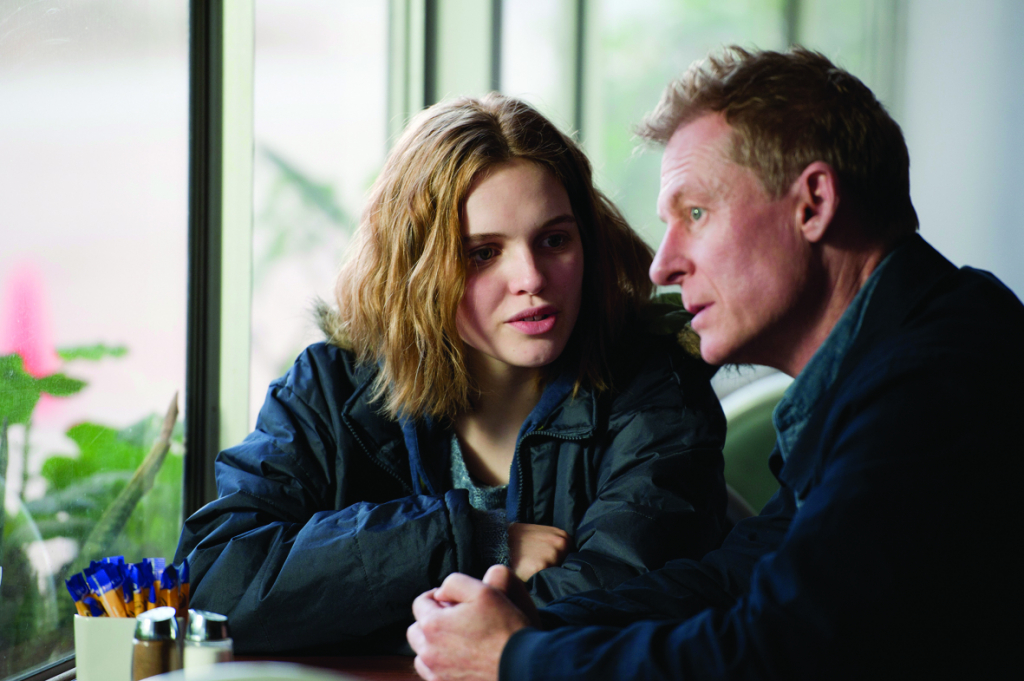
The film adeptly captures the particularly Australian milieu of sparsely populated country towns like Quairading, where corner-hotel pubs are decorated with gold tinsel curtains and lone dartboards. Brooks’ interest in these settings is evident from her earlier films, particularly Road to Nhill, which is similarly concerned with the gradations of cause-and-effect that ripple through a country community after an accident. The same dry treatment of farcical situations is present, walking the fine line between a fondness for the subjects and a more detached parody of small-town life. As is typical of films utilising outback locations, Looking for Grace bears the customary visual contrasts between the natural landscape and human-erected structures, with suburban settings depicted almost exclusively through interior shots. This is not always subtle; notably, Grace is fleeing from an over-designed IKEA-fitted house where a dropped cigarette butt on the lawn is patently not permitted. Many of the images are, however, beautifully lit and strikingly composed by cinematographer Katie Milwright. In long shots of extended duration, the characters are consistently framed by windows, or within open-sided structures such as bus stops, garages and verandahs. Here, they seek to come to terms with the spread of events that have slid out of their control, yet struggle to adequately express themselves. Brooks elaborates on the theme of miscommunication addressed in Japanese Story, and transplants it to the family structure in Looking for Grace. We share the attempts by Grace and her parents to understand one another’s oblique motivations and to reconcile their conflicting desires – but, as in Brooks’ earlier films, the precise reasons remain elusive and unclear.
Scenes are sometimes punctuated by Yasujirō Ozu–esque ‘pillow shots’ … that slow the film’s pace and open up room for contemplation, while the mundaneness of the objects provides an edge of melancholy.
In these moments, the lingering camera highlights the limitations of language in bridging the pervasive incomprehension that exists between the characters; the scraps of secrets divulged gain greater meaning for the act of sharing rather than the information that is passed. Existential concerns are made banal, such as when Dan muses over whether to pursue an extramarital affair. The dialogue is peppered with such platitudes, including Dan’s observation that ‘the night-time is the worst time’, followed by Denise’s comment ‘but it doesn’t always get better in the morning’. Yet the way the characters fall back on such clichés also speaks to their plaintive attempts to grapple with their situations. When similar criticisms were levelled at Sissy Spacek’s cliché-laden narration in Badlands (1973), Terrence Malick responded:
When people express what is most important to them, it often comes out in clichés. That doesn’t make them laughable; it’s something tender about them. As though in struggling to reach what’s most personal about them they could only come up with what’s most public.[2]Terrence Malick, quoted in Beverly Walker, ‘Malick on Badlands’, Sight & Sound, vol. 44, no. 2, Spring 1975, p. 82.
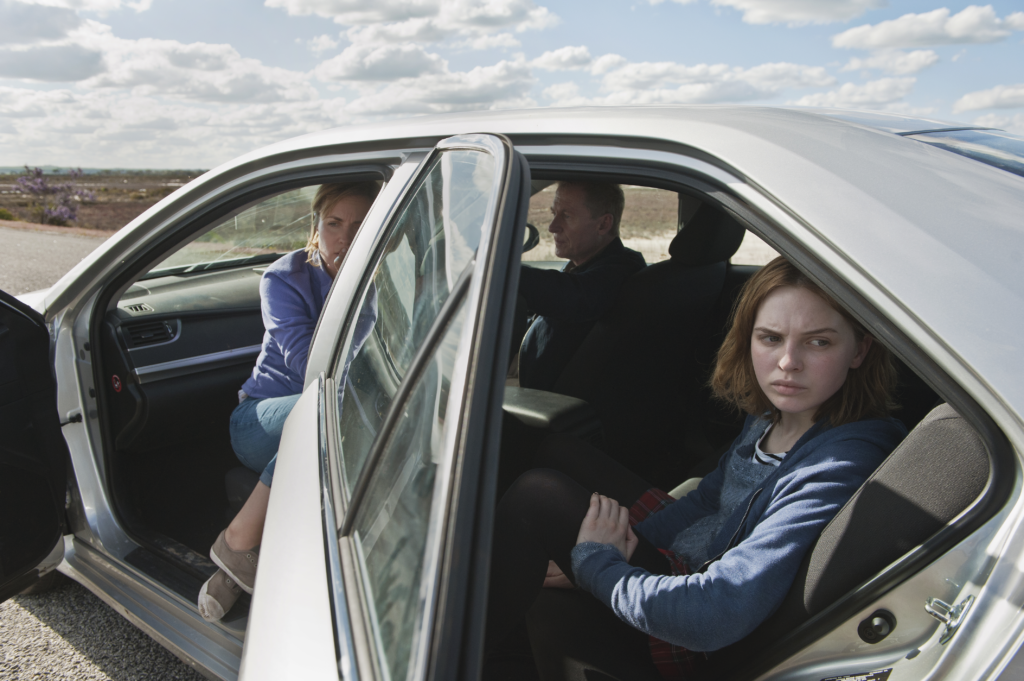
The likelihood of this being a conscious strategy on the part of the filmmakers, rather than simply poor writing, is suggested in the wry undertone that runs beneath much of the dialogue and interactions. These humorous moments, tinged with an affectionate absurdism, counter the film’s protracted pace and weightier concerns. Yet this can feel overbalanced, and the use of non sequiturs between bickering couples – reminiscent of the work of writer Harold Pinter – becomes exasperating as the suburban satire runs thin. Although Roxburgh and Terry Norris, playing the detective hired to locate Grace, turn in amusing performances, the laughs they elicit are, at times, played to the point where the comic element of human foible recedes and the humour reaches a more pathetic expression of human anxiety. The awkwardness of such moments, and the characters’ clear discomfort, arise from being faced with extraordinary situations in which the usual social protocol is inadequate. These characters are out of their depth – and the film deftly captures such discomfort.
As viewers, we generally assume a distance from, rather than a compassionate connection to, the figures on screen. Although this dualism can be frustrating at times, Looking for Grace’s multifarious approach to plot presents an original attempt to draw viewers closer to a story’s characters. In this way, the film explores themes previously addressed in Brooks’ own work and in Australian cinema more broadly, though much of the baggage is refreshed by Looking for Grace’s unconventional format. It is clear that Brooks is firmly in control of the film’s direction – and, indeed, the key creative roles on Looking for Grace were filled by women. This is significant, given Australia’s low proportion of female filmmakers (in the five years from 2009 to 2014, titles helmed by women accounted for just 15 per cent of Australia’s film output) and the recent calls by the Australian Directors Guild for a 50 per cent female-directed quota for funding recipients, as well as the recent launch of Screen Australia’s Gender Matters initiative.[3]Gender Matters is a ‘five point, [A]$5 million plan over three years to address the gender imbalance within the Australian screen industry’; see Screen Australia, Gender Matters National Hub, <https://www.screenaustralia.gov.au/about_us/new_directions/Gender-Matters/default.aspx>, accessed 17 February 2016. Brooks was one of only two women in competition at the Venice Film Festival, where Looking for Grace had its world premiere, and has expressed her exasperation at the tendency for women to be overlooked during the financing stage and later dismissed by critics.[4]See Ed Gibbs, ‘Looking for Grace Director Sue Brooks Decries Cinema’s Gender Bias’, The Sydney Morning Herald, 4 September 2015, <http://www.smh.com.au/entertainment/movies/looking-for-grace-director-sue-brooks-decries-cinemas-gender-bias-20150904-gjf1tn.html>, accessed 17 February 2016; and E Nina Rothe, ‘Why Radha Mitchell, Sue Brooks and Odessa Young Are Looking for Grace in Venice’, The Huffington Post, 9 September 2015, <http://www.huffingtonpost.com/e-nina-rothe/why-radha-mitchell-sue-br_b_8108794.html>, accessed 17 February 2016. Unsurprisingly, the film had a long gestation process, as Brooks had to source finances from a number of state funding bodies.
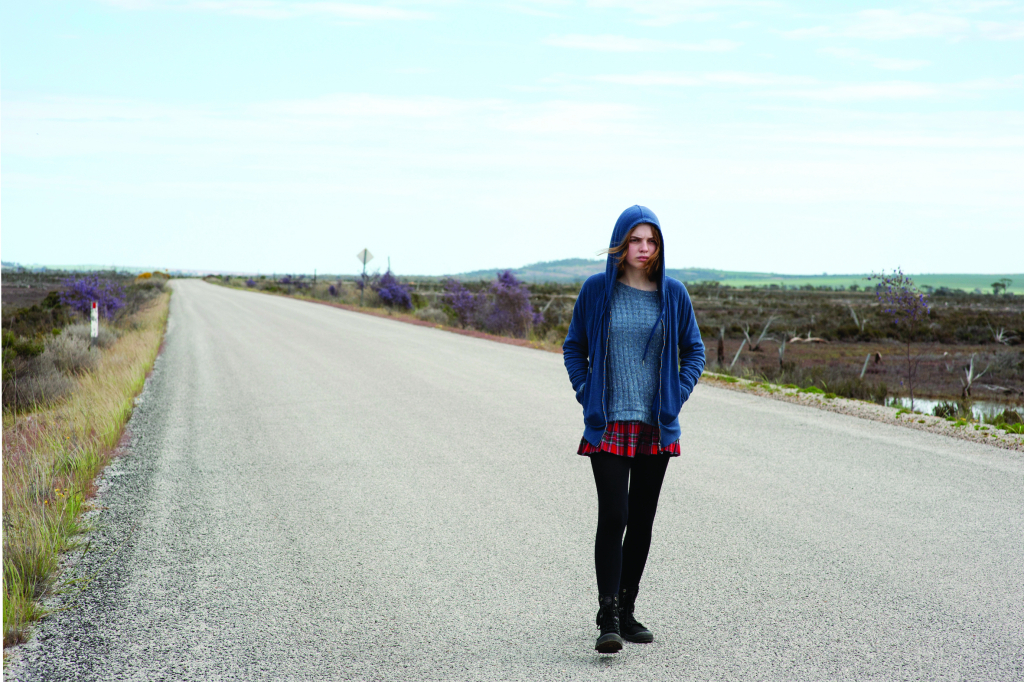
The most repeated image in Looking for Grace, which occurs at three different points in the film – each shot from the perspective of a different character – depicts Grace running, full pelt, away from the road and towards the barren scrubland. When questioned as to where she is going and what she is doing, Grace can only reply ‘nowhere’ and ‘nothing’. But, despite this inability to adequately explain the magnetic draw of the horizon, Grace assures her mother that she was never ‘missing’ or ‘lost’; much like Brooks herself, the young protagonist always knew precisely where she was going.
http://www.lookingforgrace.com.au
Endnotes
| 1 | See Martin Schneider, ‘Yasujiro Ozu and the Enigmatic Art of the “Pillow Shot”’, Dangerous Minds, 22 August 2013, <http://dangerousminds.net/comments/yasujiro_ozu_and_the_enigmatic_art_of_the_pillow_shot>, accessed 17 February 2016. |
|---|---|
| 2 | Terrence Malick, quoted in Beverly Walker, ‘Malick on Badlands’, Sight & Sound, vol. 44, no. 2, Spring 1975, p. 82. |
| 3 | Gender Matters is a ‘five point, [A]$5 million plan over three years to address the gender imbalance within the Australian screen industry’; see Screen Australia, Gender Matters National Hub, <https://www.screenaustralia.gov.au/about_us/new_directions/Gender-Matters/default.aspx>, accessed 17 February 2016. |
| 4 | See Ed Gibbs, ‘Looking for Grace Director Sue Brooks Decries Cinema’s Gender Bias’, The Sydney Morning Herald, 4 September 2015, <http://www.smh.com.au/entertainment/movies/looking-for-grace-director-sue-brooks-decries-cinemas-gender-bias-20150904-gjf1tn.html>, accessed 17 February 2016; and E Nina Rothe, ‘Why Radha Mitchell, Sue Brooks and Odessa Young Are Looking for Grace in Venice’, The Huffington Post, 9 September 2015, <http://www.huffingtonpost.com/e-nina-rothe/why-radha-mitchell-sue-br_b_8108794.html>, accessed 17 February 2016. |
